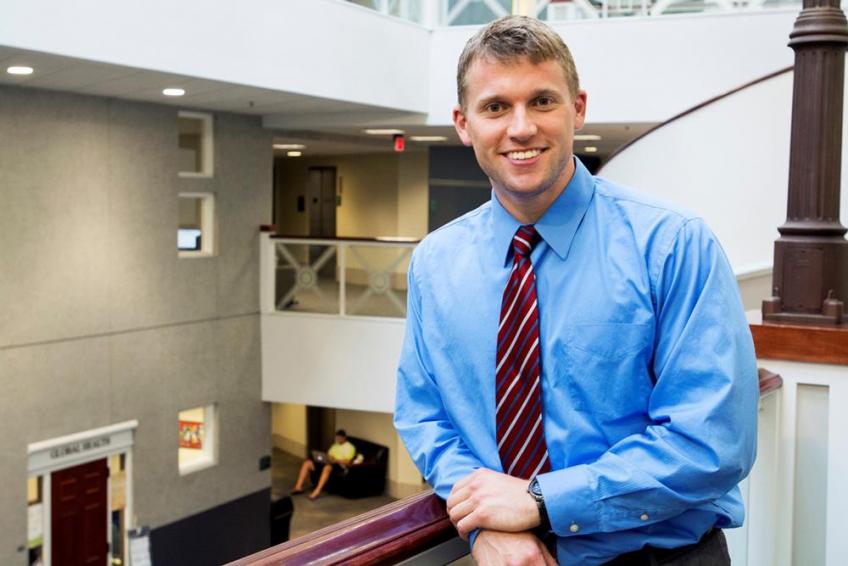Dustin Grooms, Ph.D.
- Associate Professor of Clinical Neuroscience
Areas of Expertise
- Athletic Training
- Biomechanics
- Concussion
- Kinesiology
- Motor Control
- Neuroimaging
- Neuroplasticity
- Neuroscience
- Orthopedic Injury Evaluation
- Orthopedics
Expert Bio
Dr. Dustin Grooms specializes in neuroplasticity and biomechanics with a focus on how a person’s brain changes after a muscular skeletal injury, such as an ACL injury. In particular, he looks at the impact of athletic injuries and orthopedics on the brain.
One of Grooms’ projects is a concussion program that studies how the brain changes after a concussion, using brain imaging and a virtual reality screen to challenge concussion victims. The technology is more sensitive to detect if a person has errors of senses in a concussed state.
His major focus, besides the concussion project, is researching how the brain changes after an ACL injury.
“What we’re finding is that if you get this injury, your brain rewires itself to use vision for movement,” he said. “Normally, you can close your eyes and touch your fingertips together, even though you can’t see them. This sense is called proprioception. It’s like a sixth sense in your body, so you have vision, smell, hearing, and touch, but you also have a sense where your joints are in space. If you tear your knee, you lose some of that ability. Your brain rewires itself to use your vision for movement, and we’re designing these new therapies to try to target the brain and muscular skeletal rehabilitation.”
Dr. Grooms and his team developed a tool for athletes to wear during rehabilitation to prevent them from relying on their eyes for movement.
“If you’re using some of your brainpower for vision just to control your knee, then you’re not going to interact as well with the whole environment,” he said. “We developed strobe glasses or stroboscopic training, which is a way to train your brain into not using vision as much. Athletes could wear this, and it makes their bodies rewire to get better.”
Other technologies Dr. Grooms and his team use are a scanner that can record the brain called an FMRI, and an EEG, where patients wear caps that can capture superficial brain activity.
Grooms became interested in doing research when he was an intern with the Cincinnati Bengals. He was on Carson Palmer’s rehabilitation team and noticed that despite all the best technology the NFL had for rehabilitating athletes, the players were never the same and often would damage the area again or hurt the other side. It was clear to him that they were missing something in rehabilitation.
Dr. Grooms believes the neuroplasticity effects of orthopedic injuries is a very poorly understood area. “So some people, when I first started, they didn’t believe that a ligament injury or a muscle injury could change your nervous system,” he said. “But as it turns out, it takes very, very little to change your nervous system and it can happen very rapidly. We know how your brain changes with the injury, so the next phase is to see if we can correct it with more reaction or cognitive training.”
